Join The Kashima Shrine JINKOSAI, A Sacred Festival In Ibaraki

Kashima Jingu Grand Shrine is an old, magnificent shrine in Ibaraki prefecture, just two hours by bus from Tokyo. This article introduces the plan for a day trip from Tokyo to Kashima Shrine, to see the early JINKOSAI Festival held in September.
According to legend, gods came to the land of Japan from the East Sea (nowadays known as the Pacific Ocean). Many shrines were then built to welcome them in the country, and Kashima Jingu Grand Shrine, in nowadays Ibaraki Prefecture, was one of them.
The route introduced in this article will take you to the eastern shore, where the first ray of sunlight reaches Japan in the morning, and let you join one of the most important festivals held at Kashima Shrine – the Kashima Jingu JINKOSAI Festival.
11:00 – Take a Direct Express Bus to Kashima Shrine
Taking an express bus is the fastest and most convenient way to get to Kashima Shrine from Tokyo. You can find the bus stop outside the Yaesu exit of Tokyo Station. Bus stop number 1 is for buses heading to Kashima Shrine, which will take you directly to the destination in 2 hours.
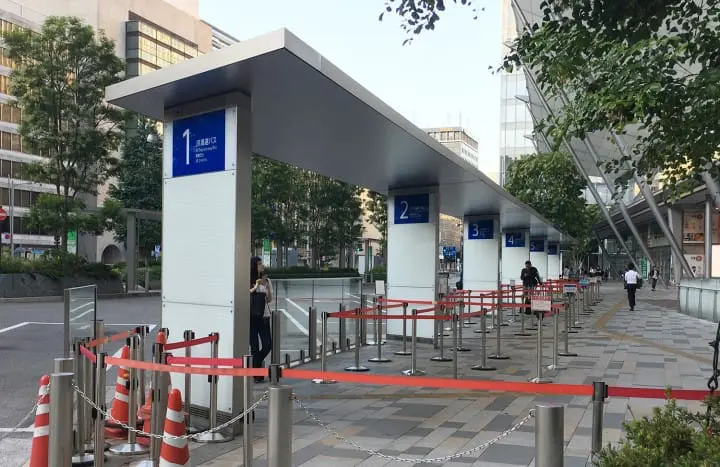
The bus departs every 10 or 20 minutes from 6:30 to 22:50. However, some buses before 16:00 only go to Kashima Central Hotel which is mid-way. Please remember to check their schedule on the electric board and take the bus to Kashimajingu Station (Kashima Shrine Station) or Soccer Stadium. The bus ticket fare for a one-way trip is 1830 yen.
13:00 – 15:00 –- Explore the Nature and Myths of Kashima Shrine
After getting off at Kashimajingu Station, turn left on the road ahead of you and you will then see a paved alley to your right. This is the shortcut to Kashima Shrine. Since it's a very large shrine, we recommend you take at least 2 hours to explore its grounds.
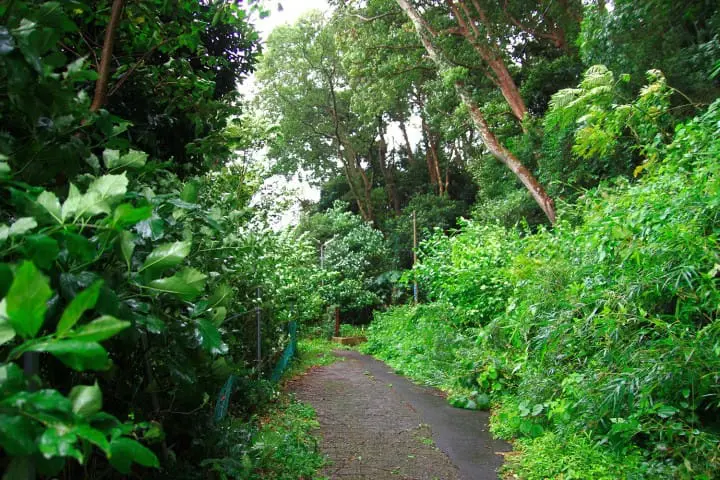
The path will guide you up a gentle slope under the cool canopy of the woods. At the end of the alley, you will see the great wooden torii (shrine gate) marking the entrance to Kashima Shrine on your left.
The original stone gate was severely damaged in the great earthquake that hit the Tohoku region in 2011, and this massive gate was built in its place. Two 500-year-old trees were used to make the pillars and a 600-year-old tree was used for the horizontal part on top.
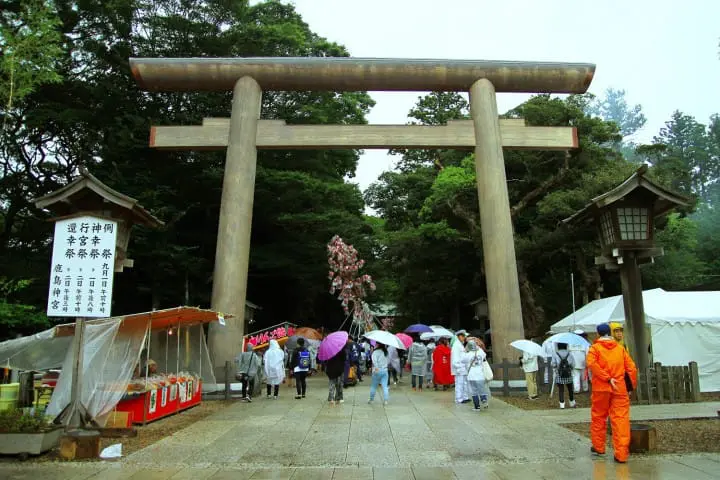
Every morning between 9:00 and 11:30, you will see volunteer guides wearing red clothing standing in front of the great torii. If you have any questions or need assistance, they will be happy to guide you around the shrine for free. (* Please be aware the guidance is offered in Japanese only.)
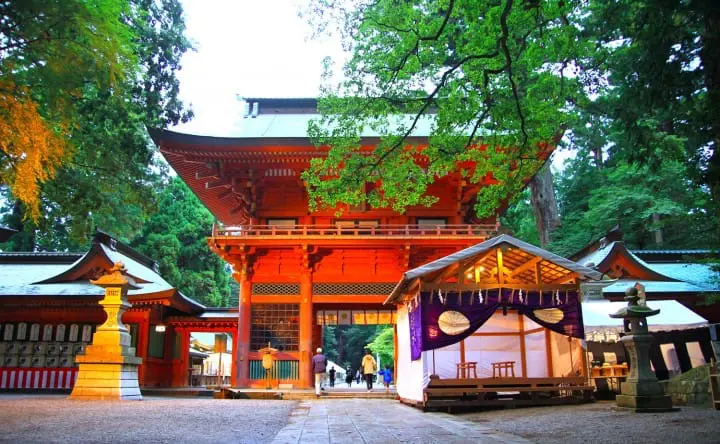
Kashima Shrine is dedicated to the patron deity of martial arts, Takemikazuchi no mikoto. It was first built around 600 BC. The tower gate entrance (called "romon") is among the three largest shrine gates in Japan. The bright red color makes it stand out against the background of the green forest.
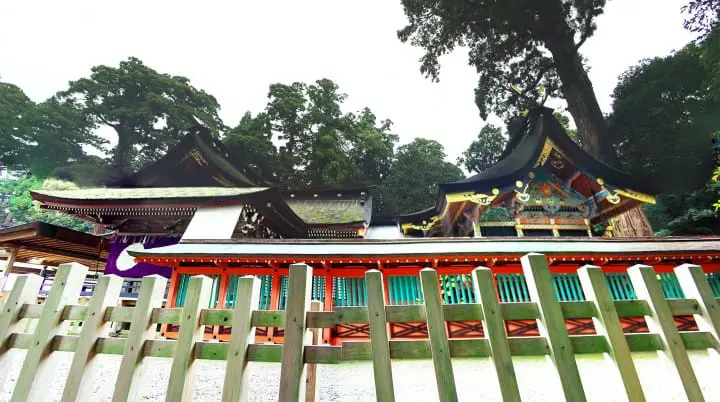
Behind the gate, on your right you will see the prayer hall (right) and main shrine (left). In the past, they used to be rebuilt every 20 years. However, the buildings we see nowadays were erected in 1619.
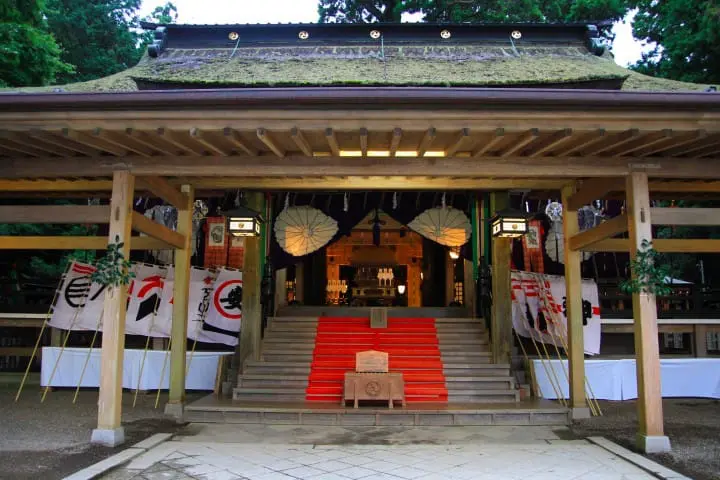
The prayer hall of Kashima Shrine
Visitors can the prayer hall from outside and pay respects to the guardian deity.
Deep inside the approximately 70,000 m2 area of Kashima Shrine Forest, lay “hidden treasures” related to the shrine, waiting for you to discover them. If you follow the forest path to the last T-junction, you will find the Okumiya - one of the sacred buildings of the shrine covered in green moss nourished by rain and fog over many long years.
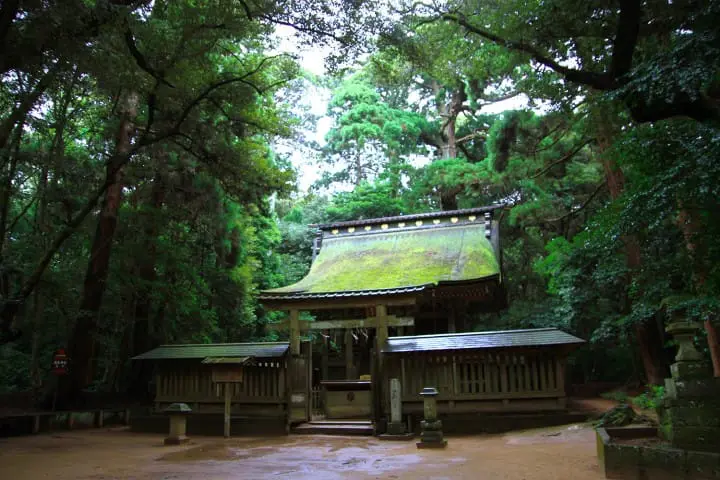
If you follow the forest path to the last T-junction, you will find the old main shrine hall covered in green moss nourished by rain and fog over many long years.
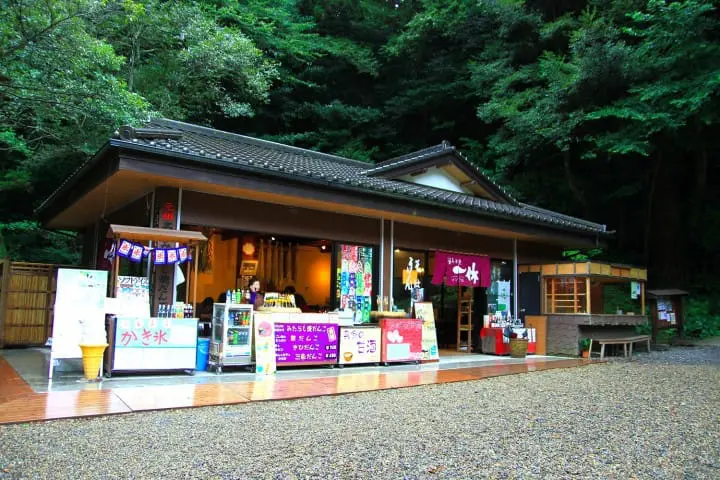
Turning to the left, you will pass a small shop on one side of the path, and then come to a wide opening where a larger shop and a resting area are located. Here you can enjoy special grilled dango and long-life amazake, a beverage that can only be found at Kashima Shrine.
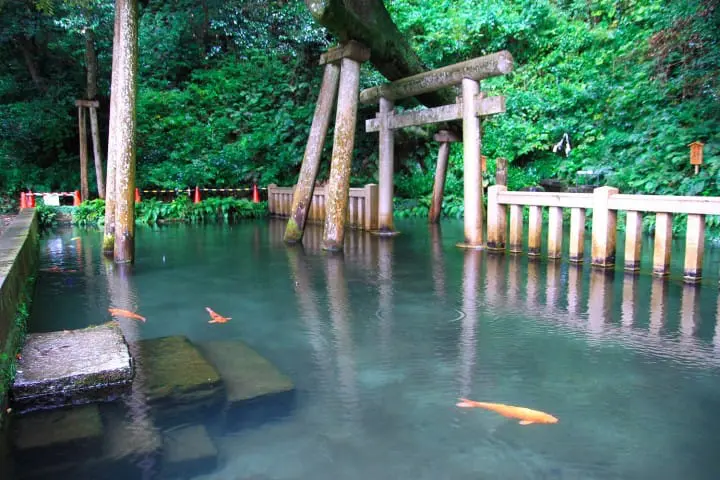
A few more steps will take you to a small pond with many beautiful koi fish peacefully swimming inside. This pond is called Mitarashi, or the pond of purifying water. Once every year in the middle of winter, a Shinto purification ceremony takes place in this very pond. On this occasion, the participants take off their clothes and soak in the cold water to purify their bodies and minds.
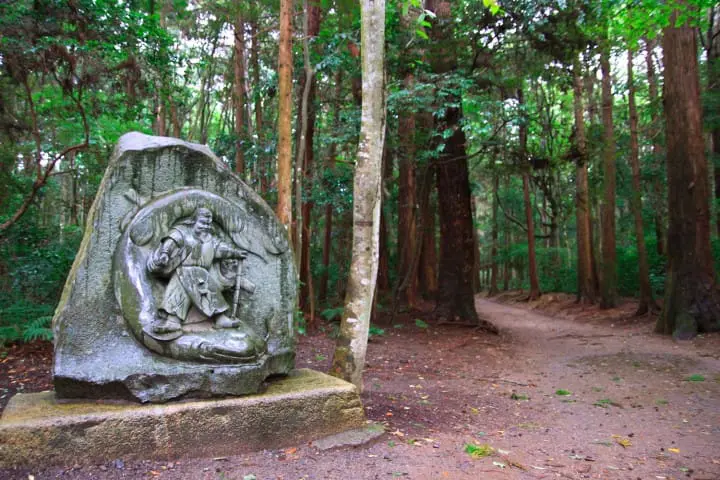
The monument illustrates Takemikazuchi pinning down the giant catfish.
The other side of the T-junction tells us the story about the guardian deity of this shrine, who is believed to have descended right in this place. The sacred rock Kanameishi used to tame the giant catfish that is believed to be causing earthquakes is also here.
15:00 – 18:00 – Kashima Shrine JINKOSAI Festival
Once a year, on September 1st and 2nd, a large festival called JINKOSAI is being held at Kashima Shrine and its surroundings. The purpose of the festival is to take the guardian deities temporarily out of the shrine and into the city so that they bring good fortune to their worshippers. JINKOSAI Festival is held to pray for peace and favorable crops. We were able to join the festivities on the first day, so the following details relate to the first day of the festival.
From 15:00, five mikoshi (portable shrines) carrying the spirits of five deities are taken out Kashima Shrine and paraded on Omachi-dori – the main road in front of the shrine. According to the records, the first of these mikoshi was made more than 150 years ago, and soon after that followed the four others. Thanks to careful preservation, they are still being used to this today.
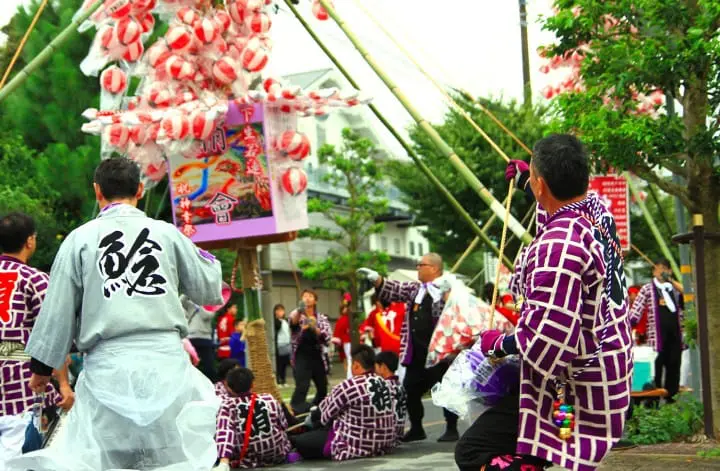
From 16:00, on the same road, a large lantern parade is held. A total of 15 teams attach their lanterns to 8-meter-high pillars, and carry them all the way to the shrine. They will dance, slant or bang the pillars to the ground with intense moves, stirring up the festival’s atmosphere.
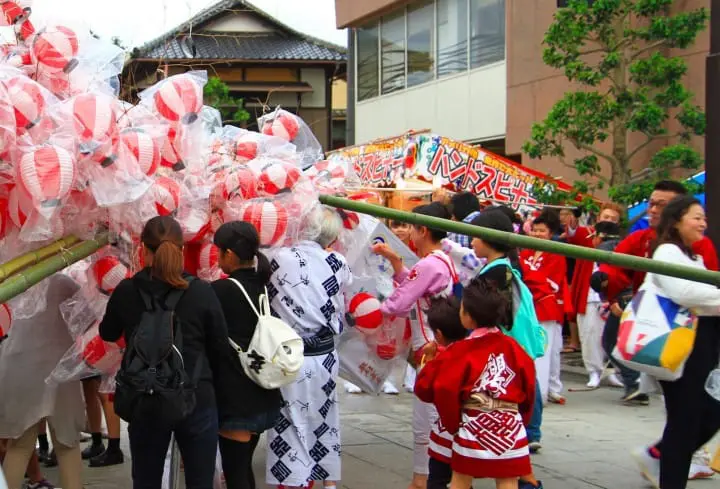
Visitors receiving the lucky lanterns.
It is believed that each lantern brings a set of unique blessings, so it's considered good luck if you get to receive one. The teams will happily give them away to visitors, so don’t be shy, go ask them for a little luck to take with you back home.
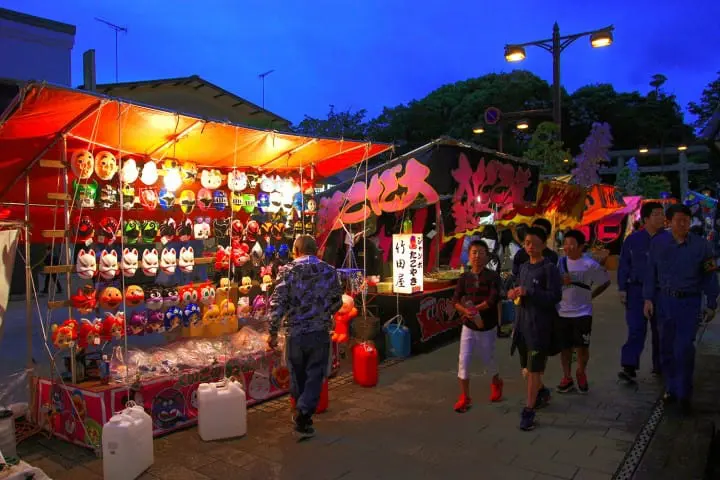
While watching the parade, you can also take a look at the various food and toy stalls found on both sides of the main road. Many typical festival dishes such as butter potato, mochi meat roll, takoyaki, and others can be bought on the spot.
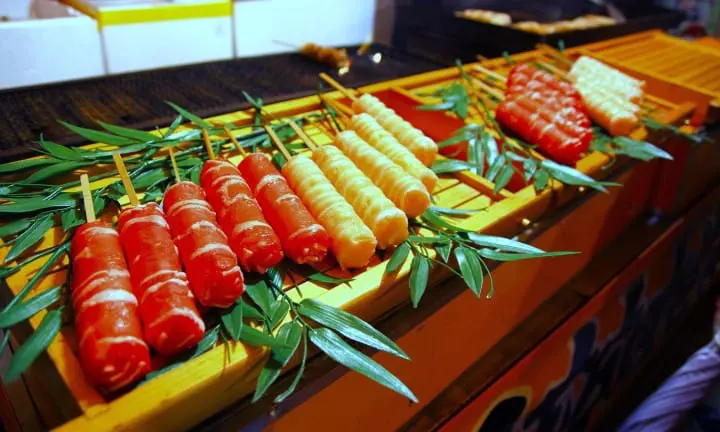
These hot treats will warm you up and give you the energy to stay until the last minute enjoying the festival.
18:00 -- Night of Dances and Light
One of the most exciting events during the festival is the So-odori, when all the portable shrine carriers gather and dance. This dance is the opening of a ceremony called Nonoji-mawashi and starts at 18:00 at parking lot No.1 of the shrine. (* The parking lot is located on the right side of the shrine.)
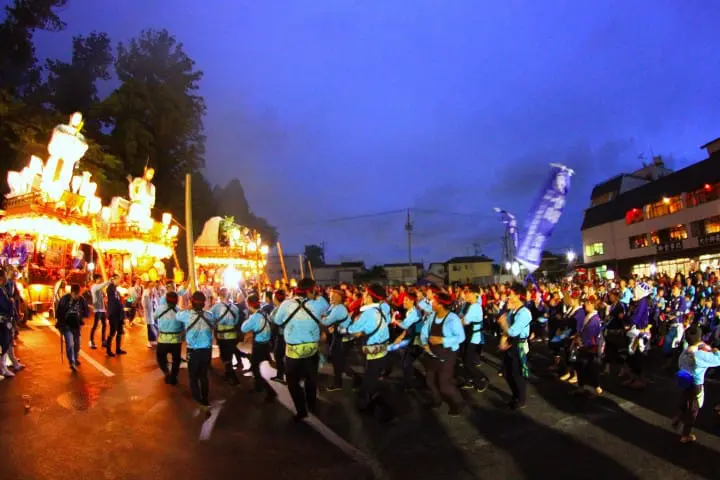
After the dance, the center of the parking lot is cleared up for the festival floats to perform the Nonoji-mawashi (turning around in the shape of the Japanese character の "no").
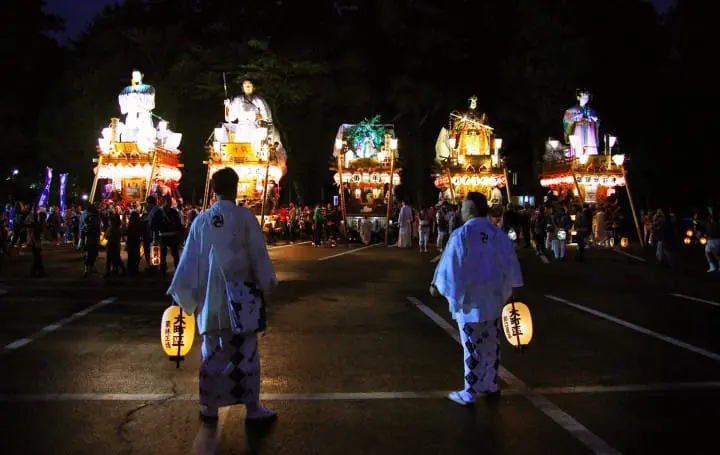
The floats are moved to the center successively, and, with the combined strength of many people, it is turned around many times to the rhythm of the music and of everyone's cheering. In the end, they will depart for a parade around the surrounding area, bringing luck and blessings for a successful harvest to the town people.
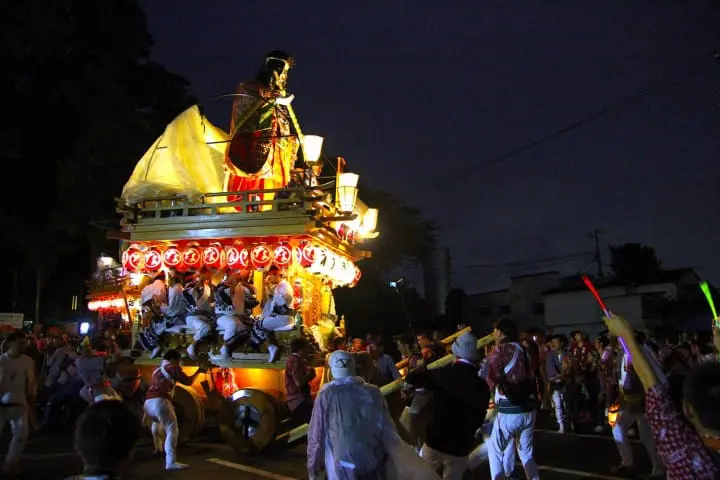
A mikoshi carrying the sun goddess Amaterasu’s spirit into the town.
At the same time, the lantern pillars are slowly carried toward the open area in front of the main gate to be burned and raised to the sky, as a way of sending the offerings to the gods.
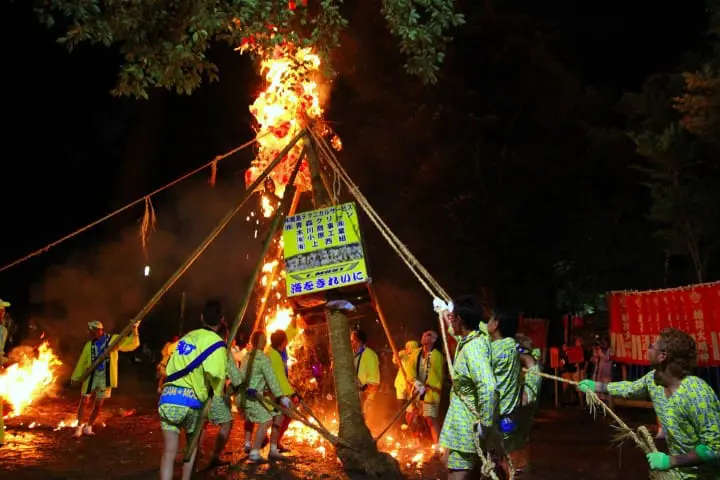
Around 20:00, the ceremony reaches its climax here in front of the main gate, wrapping up the first day of the festival. The festivities on the second day will start from 13:00 and last until 21:45.
Between 20:00 and 21:20, a bus heading to Tokyo Station departs every 20 minutes. The bus ride to Tokyo will last 2 hours, so please be careful to check the time of your last train to the station of your destination.
Enjoy the JINKOSAI Festival at Kashima Shrine!
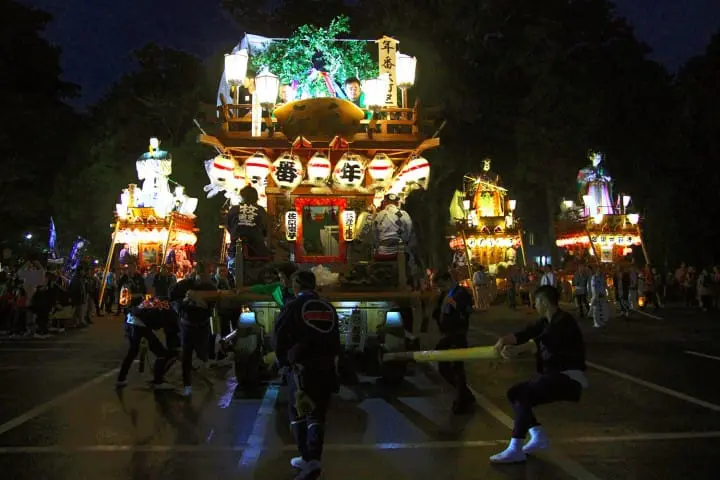
Kashima Shrine is one of the famous power spots in Japan. Many visitors from all over the country and from overseas come to this shrine to receive the blessings of its guardian deities.
Every year on September 1st and 2nd, you have the chance to witness the amazing parade of portable shrines marching the streets of the city. Mark the dates and prepare for your trip to Kashima!
Kashima Jingu JINKOSAI Festival - Route Summary
Tokyo Station → Kashimajingu Station → Kashima Shrine → Tokyo Station
Bus ticket fare (Tokyo Station → Kashimajingu Station): Round trip - 3660 yen.
Other expenses (snacks, souvenirs, etc.): 1500 yen
Supported by The Three Cities in the Suigo district(Katori, Kashima, Itako)
I'm a mountain lover living in the greater Tokyo area. Let's explore this special area together.








































![[2026] Top 5 Strawberry Picking Spots in Tokushima, Naruto| Farms and Access Guide for January to May](https://resources.matcha-jp.com/resize/720x2000/2025/03/06-227165.webp)



